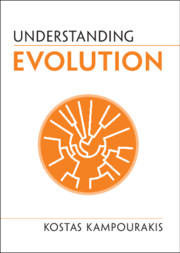Book contents
- Understanding Evolution
- Series page
- Understanding Evolution
- Copyright page
- Reviews
- Dedication
- Contents
- Foreword
- Preface: There is More to Resistance to Evolution than Religion
- Acknowledgments
- 1 The Public Acceptance of Evolution
- 2 Religious Resistance to Accepting Evolution
- 3 Conceptual Obstacles to Understanding Evolution
- 4 Charles Darwin’s Conceptual Change
- 5 Common Ancestry
- 6 Evolutionary Processes
- 7 Evolutionary Theory and the Nature of Science
- Concluding Remarks
- Summary of Common Misunderstandings
- References
- Figure Credits
- Index
- References
References
Published online by Cambridge University Press: 29 September 2020
- Understanding Evolution
- Series page
- Understanding Evolution
- Copyright page
- Reviews
- Dedication
- Contents
- Foreword
- Preface: There is More to Resistance to Evolution than Religion
- Acknowledgments
- 1 The Public Acceptance of Evolution
- 2 Religious Resistance to Accepting Evolution
- 3 Conceptual Obstacles to Understanding Evolution
- 4 Charles Darwin’s Conceptual Change
- 5 Common Ancestry
- 6 Evolutionary Processes
- 7 Evolutionary Theory and the Nature of Science
- Concluding Remarks
- Summary of Common Misunderstandings
- References
- Figure Credits
- Index
- References
Information
- Type
- Chapter
- Information
- Understanding Evolution , pp. 176 - 184Publisher: Cambridge University PressPrint publication year: 2020
